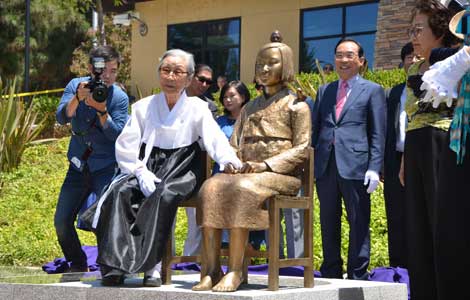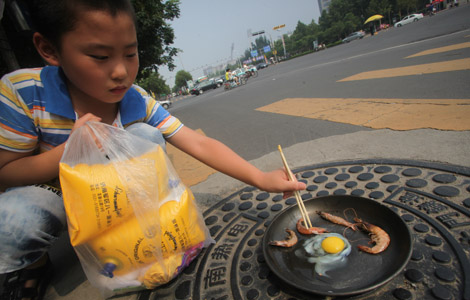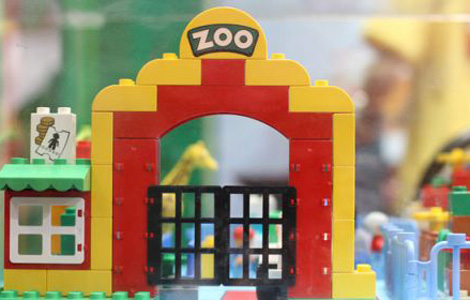Drawing fame and fortune
Updated: 2013-08-01 08:01
By Deng Zhangyu (China Daily)
|
||||||||
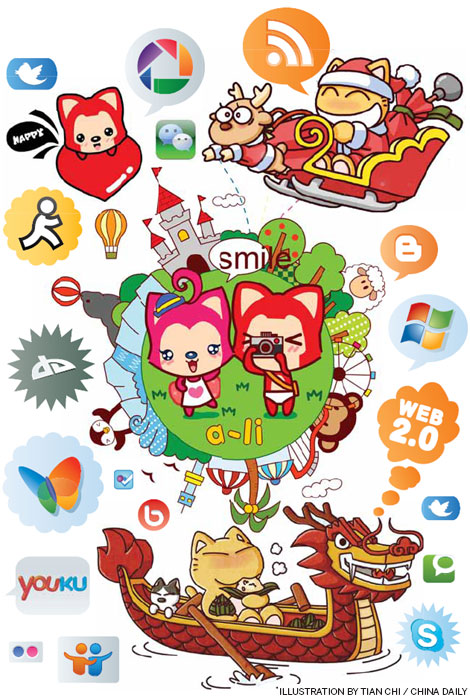
Chinese cartoonists are increasingly finding fame online, where a menagerie of animated animals is proving a hit with netizens. Deng Zhangyu reports.
In 2006, when blogs were still new in China, a group of cartoonists who had gathered at Beijing nicknamed their group "Capital Zoo", for the cartoon images they had created - a fox, a rabbit and a cat.
Now the most famous rabbit in China, Tuzki, is a popular emoticon, while the rest of the zoo is also well-known, thanks to the Internet.
Many cartoonists born after the 1980s found fame in a similar way: They created a cartoon image with stories, opened an online shop and various social network accounts such as weibo (the Chinese version of Twitter) and WeChat (a popular mobile phone messaging app).
"The Internet has provided a convenient platform for Chinese cartoons," says Xu Han, who is a member of "Capital Zoo" and is known as the creator of a red fox named Ali.
Ali, a cute fox character Xu created in 2006, grew its fame on the Internet when BBS and blogging were popular in China. Its popularity has continued to grow as Xu came up with more funny and vivid expressions for Ali, who is used by instant messaging service users as an emoticon.
Xu's company also offers a large range of Ali-related merchandise, from dolls to flip-flops to game cards.
Most goods are sold via an online store, the sales of which contributed to the company's revenue of millions of yuan last year, according to Xu.
Another "Zoo" member, Zhang Shaojie, has also developed his cartoon into an online celebrity, but he spent longer figuring out how to market his character.
Zhang's cartoon image, a cat with a toilet plunger, was published in a storybook in 2009. The story focuses on the lives of office workers and single men and women.
The original model for the cartoon was a cat owned by Zhang. The cartoonist had named his cat "toilet plunger" in Chinese because the connection of the cat's tail and rump looked like a plunger.
Soon after publishing, Zhang invested all his earnings from the book on T-shirts with the cat on them, but says, "few people bought them".
It was not until 2011 when Zhang turned to the Internet, creating more than 100 different cartoon expressions for the yellow cat that he found fame.
But just as Zhang's cat started to get lots of attention online, the cartoonist decided to devote himself to writing a cartoon book and comic strips for cartoon magazines.
Zhang now regrets not spending more time developing his character's online presence. He says he didn't take advantage of the best time to promote his cat on the Internet.
"Now my cat has a weibo account. It also uses WeChat. These are all good ways to attract fans," says Zhang. He upgrades the cat's weibo frequently, uploading comics or his cat's funny images.
Zhang's is not the only cat to find fame on the Internet.
Another cat known as Luo Xiaohei, is proving very popular.
Luo Xiaohei is black, has a long tail and lives a heroic life depicted in short animated movies. Luo Xiaohei's creator Zhang Ping came up with his heroic cat in a short animation in 2011, which soon became a hit and has since been developed into a serial.
The animation tells a funny story about a girl and her pet cat who used to be a monster. Now the black cat has about 200,000 fans on Sina Weibo, one of China's biggest weibo websites.
"I never thought of selling my film to television stations. I just went to the Internet," says Zhang Ping, 29, from Zhejiang province.
His fans call him MTJJ in the cyber world, an abbreviation of Chinese pinyin meaning wooden block, which Chinese people use to describe someone who's taciturn like Zhang Ping and his black cartoon cat.
After resigning from a cartoon company, MTJJ spent several months producing the first episode of his serial animated film in 2011 on his own. Producing the film himself and distributing it online meant the five-minute film cost as little as 3,000 yuan ($490) to make.
Now the production team has added four employees, and has produced seven episodes.

Like Zhang and Xu, MTJJ has his own e-commerce store on Taobao, China's leading e-commerce platform, to sell products related to his animation hero Luo Xiaohei. About 1,000 black cat dolls were sold in July.
"We provide free animation online. All the profits come from our cat-related products. Just producing animation in China can't make any money," MTJJ says.
The cartoonist says he spends every day drawing. He says he is happy with his cartooning work but has few thoughts about how to develop his cartoon brand in the future.
"If I am given a big sum of money by some investors, I really don't know how to deal with the money," he says. His goal is to make high-quality animations and increase the black cat's popularity.
Wu Guanying, a professor of the department of information art and design at Tsinghua University, says Chinese cartoonists are still learning from the cartoon giants in the West and Japan.
Even the Internet has helped to push more Chinese cartoonists to the spotlight, but to develop a unique style needs more time, Wu continues.
"If they want to go further and longer, they need a professional team to cultivate their cartoon brands."
Contact the writer at dengzhangyu@chinadaily.com.cn.

(China Daily USA 08/01/2013 page8)
Most Viewed
Editor's Picks

|

|

|
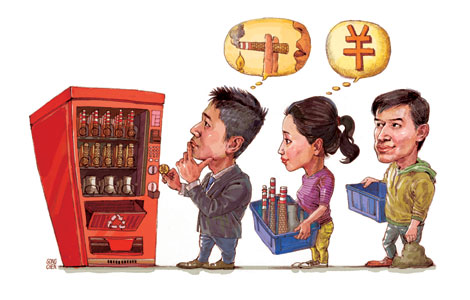
|

|

|
Today's Top News
7.5% GDP growth 'in reach' this year
Surveillance plan files declassified
Xi vows to protect maritime interests
Snowden's father thankful to Putin
UN to probe alleged Syria chemical attacks
Saudi blogger faces lashes for 'insulting Islam'
Memorial a tribute to WWII 'comfort women'
Hollywood unpaid for movies
US Weekly

|

|


